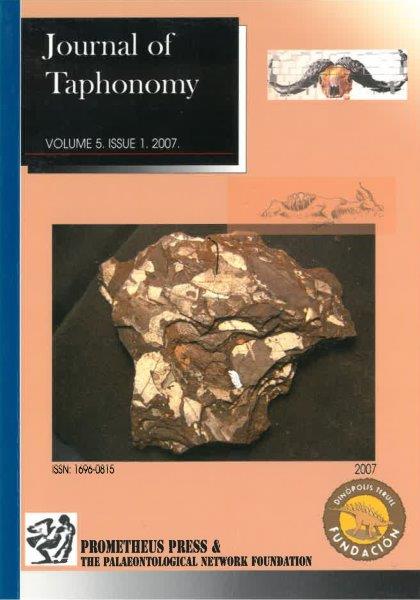


Genevieve Dewar, Antonietta Jerardino.
Keywords: MICROMAMMALS, SOUTH AFRICA, HUMANS, PREDATORS, LATER STONE AGE, DIET, SUBSISTENCE
Analysis of the faunal remains from KV502, a Later Stone Age occupation site in Namaqualand, South Africa yielded an assemblage dominated by micromammal cranial remains. The material from KV502 was compared to an assemblage of microfauna collected from the stomach area of a human burial from the same general region. This consisted entirely of post-crania. The pattern of relative abundance of elements, the degree of fragmentation of the long bones, and the level of acid etching observed in the remains of the human burial can be used to identify micromammals consumed by humans. The complementary pattern (or evidence) for processing micromammal remains by humans is identified at KV502. Further, it was determined that from the degree of modification to the bones, humans should be considered a category 5 predator following Andrews' (1990) classification. This increases the database of possible predators of micromammals, which is important when using microfauna to determine palaeoenvironments, as the preferential 'tastes' of a predator will bias the species list.
Katerina Vasileiadou, Jerry J. Hooker, Margaret E. Collinson.
Keywords: THERIDOMYIDAE, RODENTS, DENTAL ONTOGENETIC STAGES, MINIMUM NUMBER OF INDIVIDUALS (MNI), MORTALITY PROFILES
A new method of calculating the MNI and a full lifespan mortality profile in assemblages of semi-hypsodont rodents is proposed. Fossil jaws of the Paleogene theridomyid genera Isoptychus, Theridomys? and Pseudoltinomys show similar patterns of dental replacement, eruption and wear for all three genera. Deciduous premolars on the point of being replaced by their permanent successors coexist in jaws with erupting, unworn, unrooted third molars. The minimum number of individuals (MNI) in a theridomyid assemblage, of which the local origin is demonstrated, can therefore be calculated using the sum of deciduous premolars plus the most abundant of the permanent premolars or third molars. The teeth used to estimate the MNI of a species can also be used for the construction of its mortality profile. The ratio of an age-dependent crown height measurement to an age-independent crown width measurement is used as an age proxy for the establishment of 'age groups'. Wear patterns correspond well to age groups and, thus, broken unmeasurable specimens need not be excluded, as their wear stage can be used to assign them to 'age groups'.
Using these methods, the MNI and mortality profiles of one Isoptychus sp. and two Thalerimys fordi assemblages from the Late Eocene Solent Group (Hampshire Basin, Isle of Wight, southern England) were reconstructed. The mortality is attritional, showing a characteristic 'U-shape' in the distribution of the individuals in 'age groups'. The members of the three species, therefore, died of biological natural causes and not by a catastrophic event. This method can be applied to fossil semi-hypsodont micromammalian species, provided dental ontogeny is known. The method enables the construction of mortality profiles for the complete age range and, consequently, allows the analysis of the accumulation mechanisms of assemblages of semi-hypsodont rodents, with deciduous and permanent premolars. It can readily be applied to assemblages consisting only of isolated teeth.
Yannicke Dauphin, Stéphane Montuelle, Cécile Quantin, Pierre Massard.
Keywords: DENTINE, ENAMEL, MICROSTUCTURE, NANOSTRUCTURE, SUIDAE
For a better understanding of the fossilization processes and the paleoenvironmental records, knowing the state of preservation of fossil structures is essential. This paper presents how the analysis of tooth structures can be improved by using techniques increasing spatial resolution and accuracy, like atomic force microscopy (AFM). Micro- and nanostructural changes of the fresh and fossil dentine and enamel of two Suidae were thus observed with scanning electron (SEM) and atomic force microscopes. AFM and SEM show similar images for enamel and dentine in fresh teeth, whereas discrepancy occurs for fossil teeth. Both techniques show that dentine is modified by taphonomic and diagenetic processes, but only AFM is able to reveal that enamel is also altered, because AFM magnification and resolution are better than SEM ones. The apparent state of tissue preservation depends on the scale of observation and AFM, an analytical tool and a non-destructive/direct technique, allows a better understanding of the evolution of tissues at a nano-scale.
David K. Ferguson
Keywords: